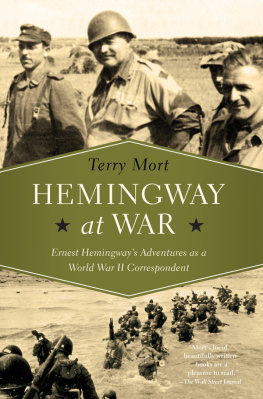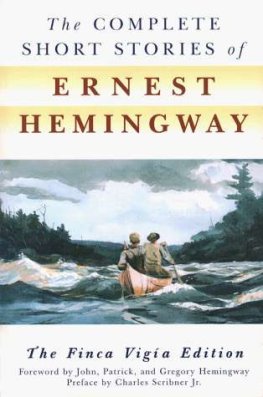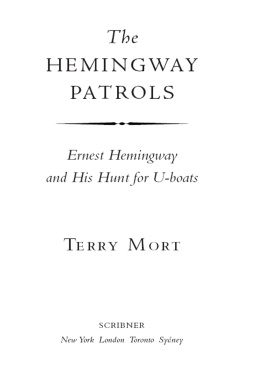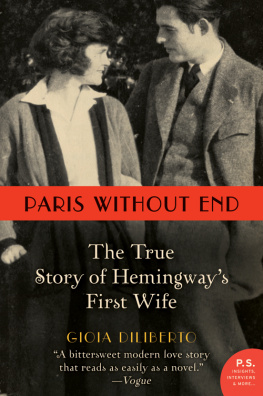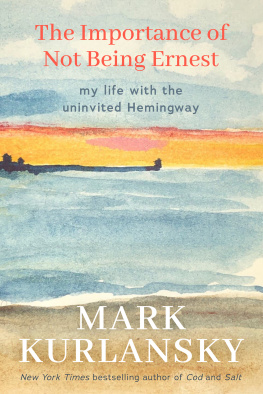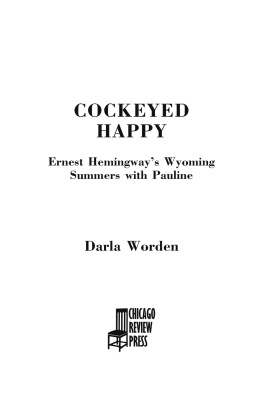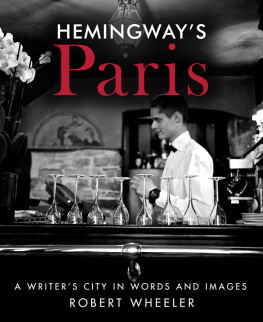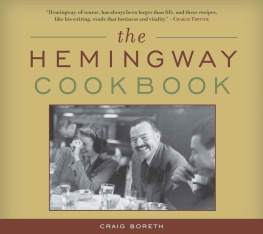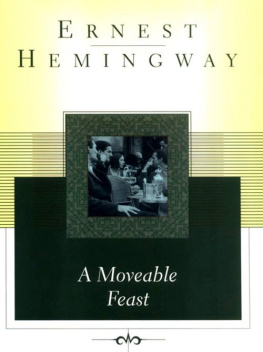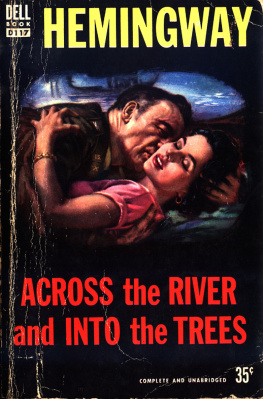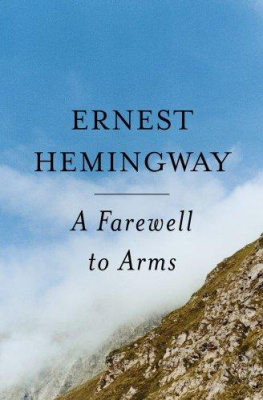Mort - Hemingway at War
Here you can read online Mort - Hemingway at War full text of the book (entire story) in english for free. Download pdf and epub, get meaning, cover and reviews about this ebook. City: New York, year: 2016, publisher: Pegasus Books, genre: Politics. Description of the work, (preface) as well as reviews are available. Best literature library LitArk.com created for fans of good reading and offers a wide selection of genres:
Romance novel
Science fiction
Adventure
Detective
Science
History
Home and family
Prose
Art
Politics
Computer
Non-fiction
Religion
Business
Children
Humor
Choose a favorite category and find really read worthwhile books. Enjoy immersion in the world of imagination, feel the emotions of the characters or learn something new for yourself, make an fascinating discovery.
Hemingway at War: summary, description and annotation
We offer to read an annotation, description, summary or preface (depends on what the author of the book "Hemingway at War" wrote himself). If you haven't found the necessary information about the book — write in the comments, we will try to find it.
Hemingway at War — read online for free the complete book (whole text) full work
Below is the text of the book, divided by pages. System saving the place of the last page read, allows you to conveniently read the book "Hemingway at War" online for free, without having to search again every time where you left off. Put a bookmark, and you can go to the page where you finished reading at any time.
Font size:
Interval:
Bookmark:


To Jon Otto and Sam Griffiths, my friends in all weathers,
and two thirds of the estimable Tuna Boys.
Long may they prosper.
HEMINGWAY
at WAR
INTRODUCTION
R eaders interested in Ernest Hemingway know that he has been the subject of a number of comprehensive biographies and memoirs. There is hardly a need for another. Nor is this book intended to be one, although some of his personal history is revisited to provide context to his adventures as a war correspondent in World War II. Hemingway had a talent for being at the center of important events. Those eventsand some of the people connected with themare a large part of this story. He was with the Allied landings on D-Day. He flew with the RAF on at least one bombing mission. He flew with them during an attack of V-1 flying bombs. He operated with the French Resistance and the US Office of Strategic Services (OSS) as the Allies advanced to Paris. And he was present and indeed active during the horrendous carnage of the battle for the Hrtgenwald in Germanys Siegfried Line. As such he provides a useful lens to examine these events and also some of the people, both the troops who fought and the civilian journalists who covered the fighting. Inevitably and understandably, his exposure to people and events affected him deeplyand affected his journalism, and later his fiction. This book attempts therefore to place him in the context of this history and in so doing expand understanding of those events and their effect on him, personally and professionally.
CHAPTER ONE
There is no pain compared to that of loving a woman who makes her body accessible to one and yet who is incapable of delivering her true self.
Lawrence Durrell
L awrence Durrell was plainly a little overwrought when he wrote those lines. Probably, he really didnt mean it. There are quite obviously many worse pains that humans suffer. Those who experienced the grotesque cruelties and disasters of the Second World War knew thatand some dwindling few still know thatall too well.
But there is at least a whiff or two of truth there, as the relationship between Ernest Hemingway and Martha Gellhorn illustrates. Their relationship influenced their subsequent careers and reputations, so it is more significant than the simple story of one writers love for another, however painful and unsatisfying that became. It became a story of marital conflict in the context of global conflict between nation-states that were fighting for survivaland races that were enduring genocide. And it is also the story of the men and women who went to the war to report it.
In the spring of 1944 Ernest Hemingway went to Europe on assignment from Colliers magazine. As a war correspondent, he was obviously a little late in arriving. Why did he finally decide to leave his comfortable home in Cuba? He disliked the bureaucracies involved in journalism, the military censorship, the competitive nature of journalists scrambling to meet deadlines and beat their rivals. Why should he enter the rat race? He was a writer of fiction, primarily, and defined himself that way. He considered himself an artist, and rightly so; these others were mostly just reporters. Some were good writers of the news, some less so. But news was different from fiction. Different from art. It was the difference between photography and painting. Now and then the two might overlap, but not often. What novelist with his reputation would enjoy simple reportinga narration of carefully massaged facts mixed with homey references to individual soldiers? Besides, he wanted to live his professional life as a lone wolf, not as a cog in an information engineespecially one that was highly regulated. Working for the weekly Colliers , he would not be in the business of scrambling for up-to-the-minute reportsa cross that many of the lesser-known journalists would carry. He was there to write features and opinion columns, not straight news stories. He would later say he only did enough to avoid being sent home. He knew he would be under the thumb of military censorshipsomething that he understood was necessary but still by definition irksome to a creative writer. He had been a war correspondent before, but the circumstances were different in the earlier conflicts he covered. In those days, journalism was a means to an end, both financially and artisticallya way of honing his craft. And that had worked. But things were different now. His novel, For Whom the Bell Tolls, had been a massive success. And he was in his midforties, a time when he might have been forgiven for wanting to relax and enjoy his success. Whats more, by definition, going to the war would distract him from his real job, creative writing. It was not just a matter of time away but also of possible contamination of the quality of his work. As he said in his 1958 interview with the Paris Review : journalism, after a point has been reached, can be a daily self-destruction for a creative writer.
Given all these objections, why did he go?
While the answer to that question does not end with Martha Gellhorn, it certainly starts with her.

It would have been easy to fall in love with Martha Gellhorn. Lots of men did. It would have been less easy to be in love with her. Lots of men found that out. One of them was Hemingway, her first husband, though not her first lover. Martha was Hemingways third wife and the only one of his four wives who had anything like a distinguished career. A successful journalist and writer, she was also the only one of the four who was glamorous, beautiful, and fiercely ambitious. And unlike the other three she was never willing to make marriage her first priority; she had another raison dtre. Or perhaps more than one.
In the early stages of her career Martha Gellhorn believed that journalism could actually have an impact on the culture, could create the kind of social and political change she believed was necessary. I believed that if everyone knew the truth, justice would be done.
Marthas brand of journalism, especially when politics were involved, was frankly and unashamedly tendentious. If the facts did not fit her version of what to her was the correct narrativei.e., the truth as she perceived itshe had no qualms about ignoring or adjusting them. In one early and notorious example, she wrote about a lynching in the South as though she had been there, even though she heard the story secondhand from a dubious source. (Its probably unnecessary to say that the victim in this story was a rural black man, not a factory owner.) Afterward she said, The point is, that article was a story. I am getting a little mixed up around now and apparently I am a very realistic writer (or liar) [sic] because everyone assumed I had been an eye-witness to a lynching whereas I just made it up. In her view, exposing the evils of white supremacy and the lynching of blacks in the South justified mixing fact with a generous dollop of fiction. No doubt there were others then, and now, who would agree. Nor did she bother to correct the record when the story was reprinted later. She never really knew whether the lynching even happened. But of course there were other lynchings that really did happen, so to Martha in this case, fiction versus fact was a distinction without a difference.
She met Hemingway, perhaps accidentally, in Key West in December 1936. She, her mother, and her brother walked into Sloppy Joes Bar, and Martha, at least, made an instant impression on the rather unkempt writer sitting at the bar. Martha was wearing a black dress that flattered her slim figure, and she was then, and always would be, well aware of the effect she could produce. Hemingway later said, admiringly, that Marthas legs began at her shoulders. Marthas long blond hair fell casually around her face and neck in a way that was dramatically different from the dark, close-cropped coif of Hemingways current wife, Paulinedramatically different and for that reason, perhaps, particularly alluring. Martha was twenty-eight, at her physical peak. She was also a published authorof a novel and a book of stories based on her work with the Roosevelt administration. The prestigious Saturday Review of Literature magazine had featured her on their cover. So while she admired Hemingways writing, she was not a starstruck fan. She could legitimately consider herself professionally in the game. Possibly, Hemingway found that appealing too. He was always attracted to people who were good at things, especially the things that mattered to him.
Next pageFont size:
Interval:
Bookmark:
Similar books «Hemingway at War»
Look at similar books to Hemingway at War. We have selected literature similar in name and meaning in the hope of providing readers with more options to find new, interesting, not yet read works.
Discussion, reviews of the book Hemingway at War and just readers' own opinions. Leave your comments, write what you think about the work, its meaning or the main characters. Specify what exactly you liked and what you didn't like, and why you think so.

